Swinburne digital works for media wall at Mirvac and Grimshaw development

In Summary
- Mirvac and Grimshaw’s theme for 664 Collins aligns with Swinburne Smart Cities Research Institute research
- Swinburne student works provide dynamic content on massive media wall
- Data-driven stories as diverse as sustainable performance of the building to tales of human bravery
Digital content by Swinburne researchers and digital media design students will feature on a massive media wall. Developed by Mirvac and Grimshaw Architects, 664 Collins Street, Melbourne features the media wall in its lobby.
The media wall is highly visible to thousands of passing commuters. People will view the works walking from Docklands to Southern Cross in the CBD.
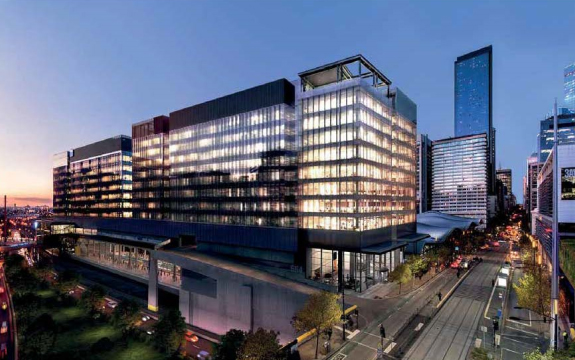 664 Collins street, image supplied by Mirvac and Grimshaw Architects.
664 Collins street, image supplied by Mirvac and Grimshaw Architects.
“Rendering the invisible visible is the theme for Mirvac and Grimshaw’s 664 Collins Street. This aligns with Swinburne’s Smart Cities Research Institute’s research focus. It supports using soft infrastructure to give people a voice,” says Swinburne’s Dean of Design, Professor Jane Burry.
“The project investigates opportunities for the media wall to meet Mirvac and Grimshaw architects’ social and artistic aspiration. A desire to enrich the communities they are designing and building for,” Professor Burry says.
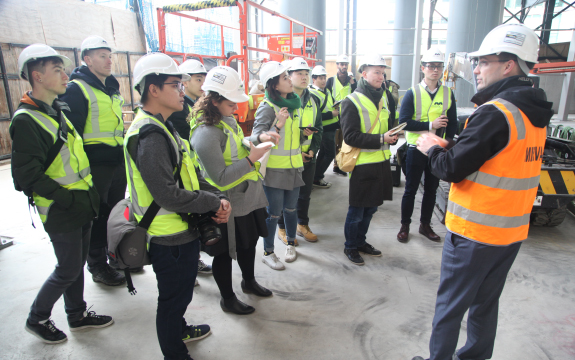 Students visiting the media wall site.
Students visiting the media wall site.
“Mirvac has a strong focus on collaborating with artists to contribute to the urban landscape and community. Public art plays an integral role in creating engaging spaces. Selected Swinburne works provide vivid and dynamic content on the 664 Collins media wall,” says Mirvac Development Manager, Scott Jarzynka.
“The works tell a story. They provide a sense of place and interpret data into an ever-changing series of visual and movement artwork,” adds Tava Darakamaran, Strategic Engagement, Grimshaw Architects.
The big screen delivers data-driven stories. Sources are as diverse as sustainable performance of the building to tales of human bravery.
Behind Sunlight by Serena Peregin, celebrates the invisible process of solar energy as it converts into electrical energy. Intricately placed tiles fall away, revealing light and movement. Sunlight is converted into electrical energy and particles dance and interact on the screen.
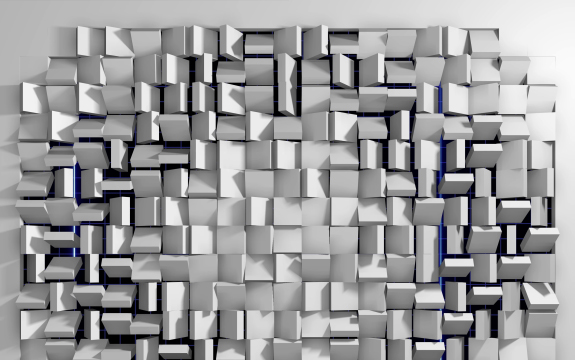 Behind Sunlight by Serena Peregin.
Behind Sunlight by Serena Peregin.
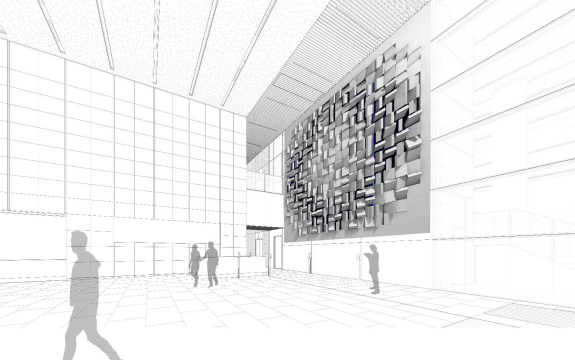 Media wall sketch with Behind Sunlight by Serena Peregin, celebrating invisible solar energy.
Media wall sketch with Behind Sunlight by Serena Peregin, celebrating invisible solar energy.
Rhythm of Emotions by Mitchell Arbuckle depicts colour and movement as expressions of our invisible emotions. Average data collected from human-patient monitors when presented with various stimuli is visualised.
 Rhythm of Emotions by Mitchell Arbuckle.
Rhythm of Emotions by Mitchell Arbuckle.
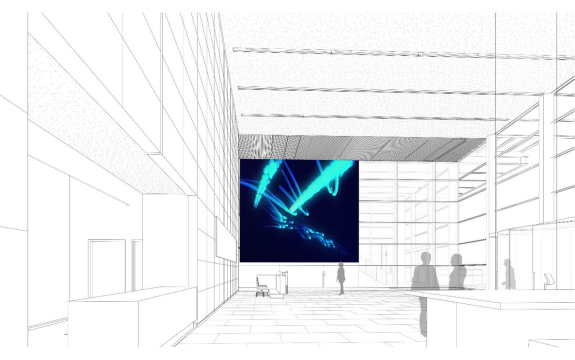 Media wall sketch with Rhythm of Emotions by Mitchell Arbuckle, expressing invisible emotions.
Media wall sketch with Rhythm of Emotions by Mitchell Arbuckle, expressing invisible emotions.
Erased Space by Samuel Harvey is dedicated to casualties of the Iraq war. His work is created from longitudinal casualty survey maps. Casualties appear as large and profound depressions in the patchwork of Iraq’s nineteen provinces.
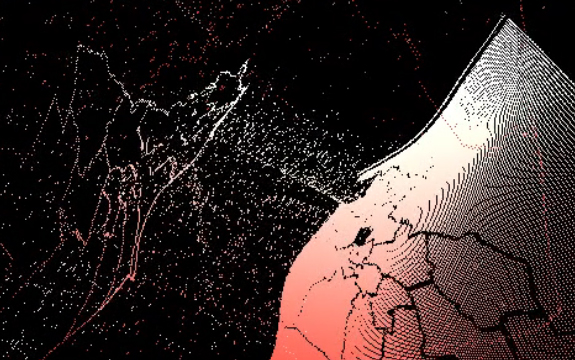 Erased Space by Samuel Harvey.
Erased Space by Samuel Harvey.
From September, the wall will include a second series of Swinburne design student works. These will feature real-time, interactive and evolving, data driven outcomes.
“The new works will respond to internet data feeds. The value of crypto currencies and data from sensors around Melbourne will be referenced. Data about weather, parking and foot traffic will be used,” says Swinburne Digital Media Design leader James Marshall.
“Works will reference evolving and adaptive algorithms. Students and researchers will use real-time interaction through personal devices such as smart phone sensors. They’ll use motion detection, touch and audio,” says Mr Marshall.
Research and student works are generously supported by Mirvac with active input from Grimshaw and Mirvac.
The Swinburne Smart Cities Research Institute is supporting this research. It is exploring the potential of combining artistic digital production and data science to captivate a transient audience, working to reveal the headline environmental and social stories concealed within big urban data.
Read more news on design at Swinburne.

